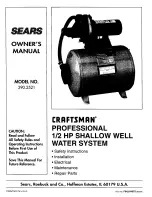
3.2.4 Cooling and Airflow
There are different ways to cool the active filter:
•
Use the cooling ducts in the top and bottom of
the unit
•
Take air into the back of the unit
•
Combine top, bottom, and back airflow
Back cooling
The active filter has a back channel cooling system where
85% of all heat is ducted via an IP54 segregated back
channel. This reduces the needed airflow inside the
enclosure and ensures less moisture and dust across vital
components.
The back channel air is normally ventilated via the plinth
inlet and ducted out the top of the enclosure. The design
of the back channel can also take air from the control
room and duct it back out again. This is supported to ease
stress on the control room air conditioner and conserve
energy. To support a backwall inlet, the unit air inlet has to
be blocked via an optional cover and the air outlet ducted
via an optional top duct.
NOTICE
The active filter fan runs for the following reasons:
•
Active filter running.
•
Specific heat sink temperature exceeded (power
size dependent).
•
Specific power card ambient temperature
exceeded (power size dependent).
•
Specific control card ambient temperature
exceeded.
Once the fan is started, it runs for a minimum of 10
minutes.
External ducts
If additional duct work is added externally to the
enclosure, the pressure drop in the ducting must be
calculated. Use
Illustration 3.10
and
Illustration 3.11
to
derate the unit according to the pressure drop.
90
80
70
60
50
40
30
20
10
0
0
0.5
4.9
13
27.3
45.9
66
89.3 115.7 147
(%)
(Pa)
Pressure Increase
Filt
er D
er
ating
130BB932.10
Illustration 3.10 Enclosure Size D, Derating vs. Pressure
Change
Air Flow: 450 cfm (765 m
3
/h)
90
80
70
60
50
40
30
20
10
0
(%)
Filt
er D
er
ating
0
0
0.1
3.6
9.8 21.5 43.4
76
237.5
278.9
(Pa)
Pressure Change
130BB933.10
147.1
Illustration 3.11 Enclosure Size E, Derating vs. Pressure Change
Air Flow: 725 cfm (1230 m
3
/h)
Mechanical Installation
Operating Instructions
MG90V302
Danfoss A/S © 09/2014 All rights reserved.
13
3
3
















































